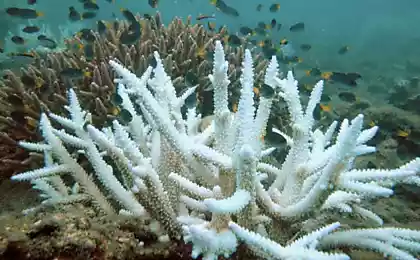1506
Corals appeared 240 million years earlier than previously thought

Coral polyps capable of forming giant construction - coral reefs, play a crucial ecological role. Ecosystem evolving around corals, are the backbone of many regions.
Now many coral ecosystems are under threat of death due to an increase in ocean temperatures under the influence of global warming and rising levels of acidity of the water due to the increasing amount of CO2 absorbed by water.
Nori Satoh (Nori Satoh) from the Department of Marine Genetics Okinawan Institute of Science and Technology and his colleagues first deciphered the genome of corals Acropora digitifera, to better understand the molecular mechanisms responsible for the adaptation of corals to changes in the external environment.
Corals Acropora digitifera common in the vicinity of Okinawa and the most sensitive to changes in water temperature.
The authors compared the data with information about the genome of other marine organisms belonging to the type goad, which include jellyfish, polyps, sea anemones, hydras. As a result, scientists have found that corals diverged from its closest relative - anemone Nematostella vectensis - about 500 million years ago.
This means that the corals appeared much earlier than previously thought: coral fossils date back to the era of no earlier than 240 million years ago.
In addition, it was found that corals Acropora digitifera depend largely on their symbionts - living right inside their cell photosynthetic microorganisms. Corals, as shown by the genome, are unable to synthesize critical to the survival of the organism amino acids - cysteine, and get it only from the symbiote.
Genome "told" the scientists that corals are able to protect themselves from ultraviolet radiation they produce mikosporin-like amino acids, which are strong UV protectors.
Scientists have also discovered the genes responsible for "building capacity" coral - responsible for the creation of their calcium carbonate skeletons.






















